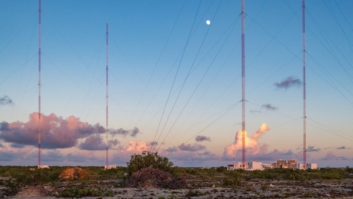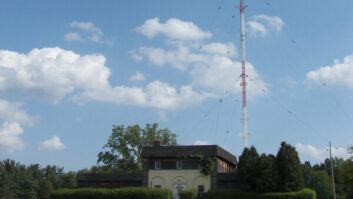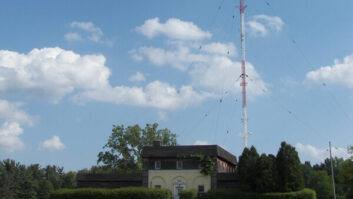In this letter to the editor, the author responds to Mark Persons’ story “A Visit to “Shine 800 AM.” Radio World welcomes letters to the editor on this or any story. Email [email protected].
In the very nice article about Trans Mundial Bonaire, I fear that Mark Persons may have unintentionally misinterpreted Kintronic Labs Senior Staff Engineer Jim Moser’s comment about parasitic elements in directional AM arrays. Arrays with parasitic elements are actually not all that uncommon.
There are two types of parasitic elements in directional arrays: those with towers that are simply grounded, and those which have a “passive” load with a suitable impedance. A grounded parasitic does have the load produced by the loss in the tower itself and the ground connection, but those are normally very low resistance values.
Grounded versus loaded
Arrays with parasitic towers that are just grounded are indeed rare because there is no control over the current magnitude and phase. Before moment method (MM) analysis techniques began to be commonly used, predicting those values could be troublesome.
In a 2 MW, 4-element array that I designed, my colleague Ron Rackley was unsure enough about the MM model that he convinced me to specify that the top of the parasitic towers be constructed in 10 ft. sections. This way, we could remove them if needed to get the right performance, although when it was built, our measurements showed this was not necessary.
I think this is the type of parasitic array that Moser at TWR was referencing.
[Related: “Rackley Was Revered in Engineering Community”]
Conversely, arrays with parasitic towers that are loaded with a resistance, a reactance or a combination of the two are not all that uncommon. Although few arrays with very low power resistive- and/or reactance-loaded parasitic towers were in operation in the U.S. before the FCC eliminated the discrete transmitter power output rules, they have become more common since then.
The commission now allows the transmitter output power to include both the radiated power and the power terminated in a resistive load on the parasitic tower thanks to an application Rackley prepared shortly after the rule change.
This is a particularly useful technique for some linear arrays with high RSS/RMS ratios since it increases stability. It’s useful in some other scenarios as well.
For example, Moser and our office used the technique in a very recent installation, and we’ve used it for both new designs and repair projects. And this technique has been employed in quite a few high power arrays outside the western hemisphere, as Moser stated.
— Ben Dawson, Hatfield & Dawson Consulting Electrical Engineers







